In the MBLEx US Federal Massage Exam, the human circulatory system is always a high-frequency test point, and it is also a knowledge point that many students are easily confused about. Therefore, today we will explain this knowledge point in detail. Don’t worry, I will use the simplest Chinese so that everyone can learn knowledge in a relaxed and happy atmosphere, even if you have no basic knowledge, you can understand it!
[Note] If you have not yet read the first high-frequency test point explanation in this series – “Human Skeleton, Muscles and Joints”, you can click here to review .
[If you prefer to watch the video version, click here ]
【Human Circulatory System】
The human circulatory system consists of two subsystems: the cardiovascular system and the lymphatic system.
The blood circulatory system carries blood, while the lymphatic system carries lymph. Lymph flows centripetally along a series of lymphatic vessels and eventually flows into the veins. Therefore, the lymphatic system can also be considered an auxiliary part of the venous system.
Let’s first look at the circulatory system – this system consists of the heart, blood vessels (including arteries, veins and capillaries) and blood:
1. Heart
The heart is the core of the circulatory system. It is a powerful pump that pushes blood through contraction and relaxation. The heart is mainly composed of four chambers:
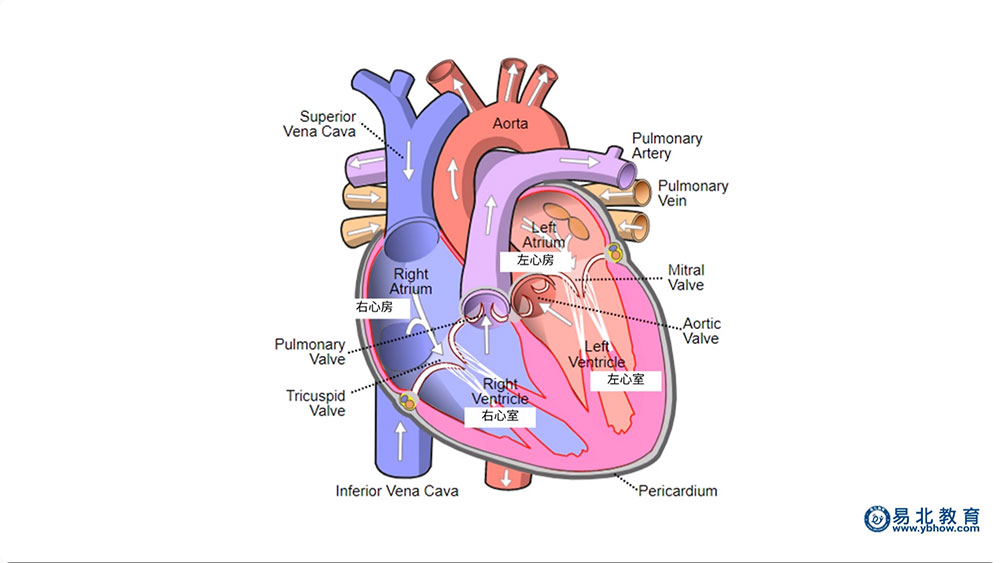
Left Atrium
Right Atrium
Left Ventricle
Right Ventricle
Among them, the atria and ventricles on the same side are connected, while the left and right atria and the left and right ventricles are separated from each other.
The left ventricle is connected to the aorta, the right ventricle is connected to the pulmonary artery; the left atrium is connected to the pulmonary vein, and the right atrium is connected to the superior and inferior vena cava. Thus, the ventricle is connected to the artery, and the atrium is connected to the vein.
Valves connect the atria and ventricles, and the ventricles and arteries, controlling the flow of blood in one direction.
2. Blood vessels
Blood vessels include three types: arteries, veins and capillaries.
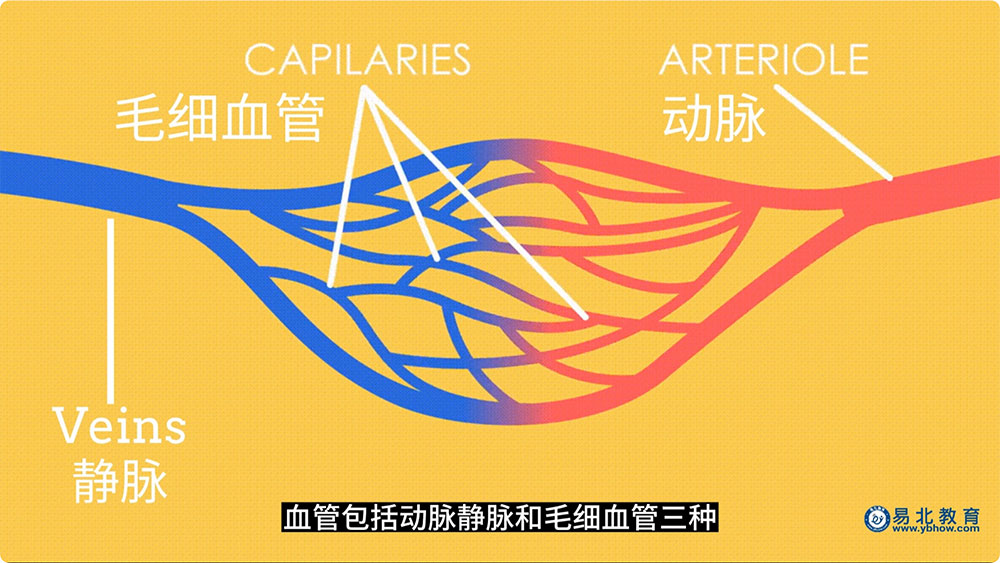
- Arteries: Arteries are blood vessels that carry oxygen-rich blood from the heart to all parts of the body (except the pulmonary artery, which carries deoxygenated blood to the lungs for oxygenation). Arteries have thick walls to withstand the high pressure from the heart pumping blood.
- Veins: Veins are blood vessels that carry oxygen-poor blood from the body back to the heart (except the pulmonary veins, which carry oxygen-rich blood from the lungs back to the heart). Veins have thinner walls than arteries and have lower internal pressures. Most veins have valves to prevent blood from flowing back up.
- Capillaries: These are the smallest blood vessels that connect arteries to veins. The walls of capillaries are very thin, which allows oxygen and nutrients to pass from the blood through the capillaries into the body’s cells, and waste products and carbon dioxide to pass from the cells into the blood.
Together, these three types of blood vessels form a complex network that enables blood to flow to every corner of the body.
3. The blood circulation of the human body is divided into [systemic circulation] and [pulmonary circulation]
【Systemic Circulation】
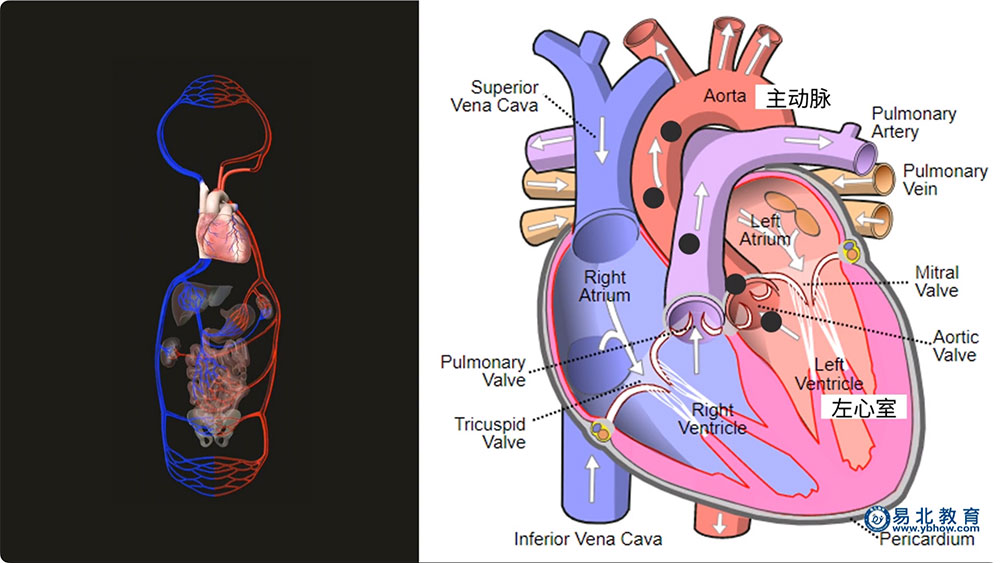
The left ventricle pumps oxygen-rich blood into the aorta, which is then distributed to the arteries throughout the body. This blood enters various organs and tissues through capillaries, releasing oxygen and nutrients while collecting carbon dioxide and other wastes. This “used” blood eventually returns to the right atrium through the superior and inferior vena cava.
When the blood contains more oxygen, it will be bright red. This kind of blood is called arterial blood, also called oxygen-rich blood, or energy blood. When the blood contains less oxygen, it will be dark red. This kind of blood is called venous blood, also called oxygen-deficient blood, or waste blood.
Pulmonary Circulation
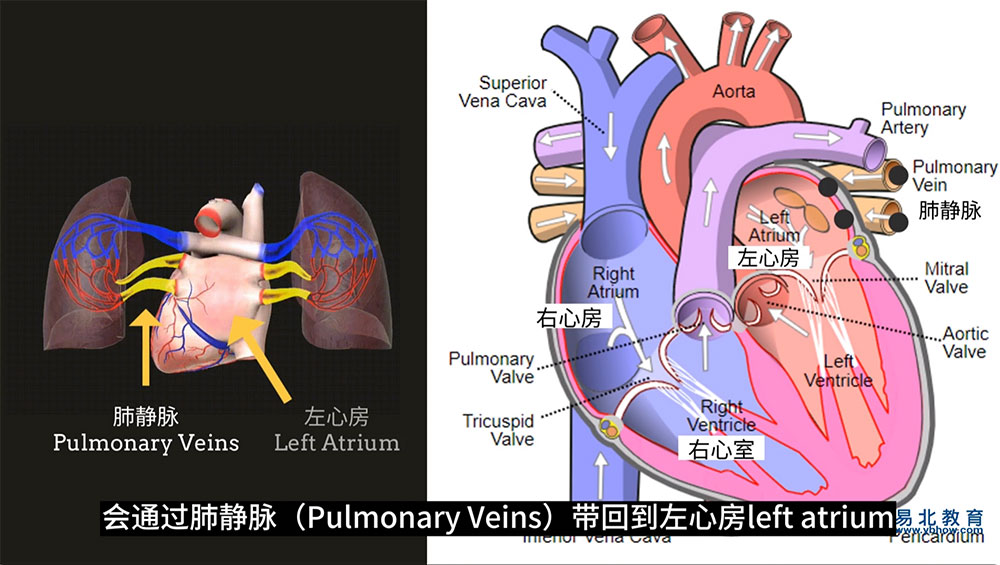
The right atrium receives low-oxygen blood from the whole body and pumps it into the right ventricle, which then sends it to the lungs through the pulmonary artery. In the lungs, the blood releases carbon dioxide and absorbs oxygen through the pulmonary capillaries, and this fresh oxygenated blood returns to the left atrium through the pulmonary veins.
What everyone needs to pay attention to is that, contrary to the systemic circulation, the pulmonary artery blood in the cardiopulmonary circulation is oxygen-deficient blood, while the pulmonary venous blood is oxygen-rich blood.
Simply put, the systemic circulation follows the “right in, left out” principle – blood is pumped out from the left ventricle and returns to the right atrium through the vena cava .
Pulmonary circulation follows the “left in, right out” principle – deoxygenated blood enters the lungs from the right ventricle through the pulmonary artery, and returns to the left atrium through the pulmonary vein after being oxygenated .
As long as you remember these two formulas, you can easily answer questions about systemic circulation!
Let’s look at the topic:
【MBLEx real exam analysis】
In cardiovascular circulation, blood enters from the vena cava to?
cardiovascular circulation
vena cava vena cava
In blood circulation, blood enters from the vena cava?
A. Left ventricle
B. Right ventricle
C. Left atrium
D. Right atrium
The correct answer is D. Right atrium
「Exam Question Analysis】
In cardiovascular circulation, blood enters from the atria and leaves from the ventricles. As long as you remember the formula: right in and left out is systemic circulation; left in and right out is cardiopulmonary circulation, you can make a very simple judgment!
We just said that the “used” blood will eventually gather in the superior and inferior vena cava and be injected into the heart – they are part of the systemic circulation, and according to the “right in and left out” principle, venous blood enters the right atrium.
The question asks, where does the blood flow from the vena cava into? The answer is right atrium. If the question asks: which chamber of the heart does the pulmonary veins, which obtain energy through the cardiopulmonary circulation, flow into? According to the principle of “left in and right out is pulmonary circulation”, the pulmonary veins (pulmonary veins) enter: left atrium (Left atrium).
Isn’t it very simple to remember this way?
After talking about the circulatory system, let’s take a look at the lymphatic system.
【Lymphatic System】
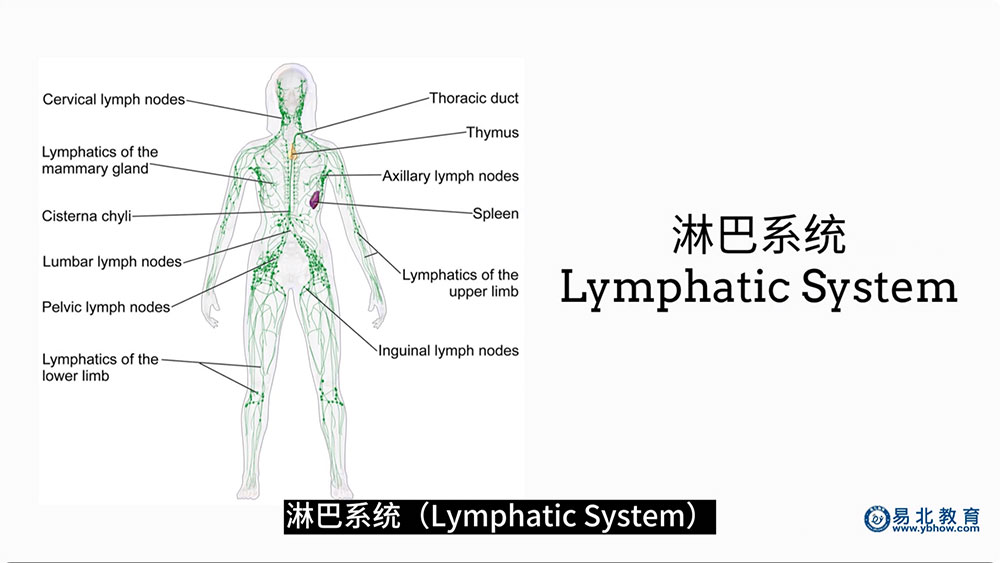
The lymphatic system, also known as the lymphatic circulatory system, is an important part of the human immune system. The lymphatic system is responsible for transporting and filtering lymph fluid (a fluid containing white blood cells) to prevent infection and disease.
The most commonly tested topic on the MBLEx federal massage exam is the sequence of lymphatic circulation.
The order of lymphatic circulation is as follows:
- Lymphatic capillaries : These tiny, closed tubes collect fluid (lymph) and dissolved substances from the surrounding tissues. When these substances enter the lymphatic capillaries, they become lymph.
- Lymph vessels : Lymph capillaries join larger lymphatic vessels, through which lymph flows.
- Lymph nodes : Lymph vessels lead to lymph nodes. These structures are filled with immune cells that filter harmful substances from the lymph fluid.
- Lymph trunks : Lymphatic vessels converge into larger lymphatic trunks, which are responsible for transporting lymph from different areas of the body.
- Lymph ducts : The lymphatic trunks empty into two major lymphatic ducts, the right lymphatic duct and the thoracic duct. These two ducts carry lymph back to the circulatory system.
- Subclavian veins : Lymphatic ducts drain lymph into the subclavian veins, where it reenters the bloodstream.
In general, the order of lymphatic circulation is: lymph capillaries -> lymphatic vessels -> lymph nodes -> lymphatic trunks -> lymphatic ducts -> subclavian vein.
Let’s look at an actual question:
【MBLEx real exam analysis】
What is the sequence of lymphatic circulation?
lymphatic circulation
What is the order of lymphatic circulation?
A. Lymphatic vessels – lymphatic duct – subclavian vein – lymphatic capillaries
B. Lymphatic capillaries – lymphatic vessels – lymphatic duct – subclavian vein
C. Lymphatic nodes- lymphatic capillaries- subclavian vein- lymphatic ducts
D. Lymphatic vessels – lymphatic capillaries – lymphatic duct – subclavian vein
Correct answer
B. Lymphatic capillaries – lymphatic vessels – lymphatic duct – subclavian vein
Lymphatic capillaries -> Lymphatic vessels -> Lymphatic ducts -> Subclavian vein
Cardiovascular circulation and lymphatic circulation are the two main circulatory systems in the human body. They have some basic differences:
- Circulation mode: Cardiovascular circulation is a closed system, where blood circulates between the heart and blood vessels. Lymphatic circulation is an open system, where lymph collects waste and excess fluid from the intercellular spaces and then enters the blood circulation through the lymphatic ducts in a one-way cycle.
- Circulating substances: The blood that flows in the cardiovascular circulation includes red blood cells, white blood cells, platelets, plasma, etc. The lymphatic circulation flows in lymphatic fluid, which mainly contains water, protein, waste products, and lymphocytes.
- Function: Cardiovascular circulation mainly supplies oxygen and nutrients and removes carbon dioxide and waste. Lymphatic circulation mainly removes waste from tissue fluid, absorbs fat in the intestine, and participates in immune response.
Well, students, we have finished talking about the two major circulatory systems of the human body – blood circulation and lymphatic circulation. Students must learn to distinguish between systemic circulation and pulmonary circulation, and remember the order of lymphatic circulation.
If you are preparing for the MBLEx U.S. Federal Massage Exam, are interested in Elbmble’s massage coaching courses, or have any questions about the courses, you can directly add my WeChat (ybmblex), or call me directly at (702) 892-7688 for consultation. We will answer any questions you have!


